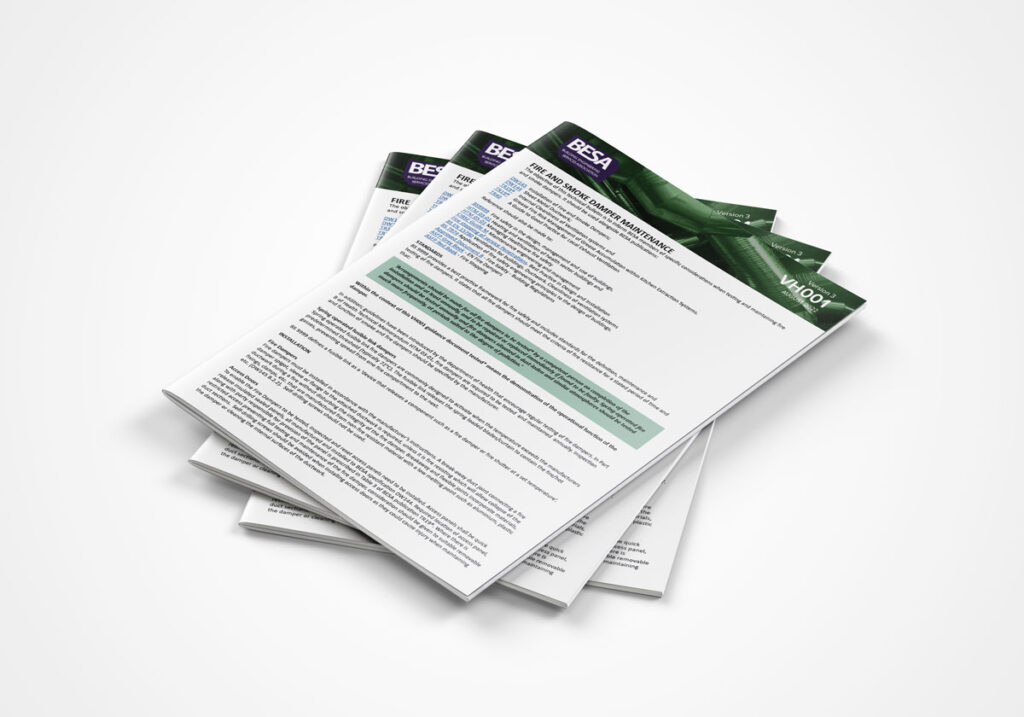Version 3 – Updated August 2022

The Building Engineering Services Association have issued an updated version of VH001 Fire and Smoke Damper Maintenance.
In March 2021 the guide was updated to give clarity around the required frequency of testing for fire and smoke damper testing, as well as guidance on the correct testing procedure to follow.
In August 2022 the third edition was revised and reissued by The Building Engineering Services Association (BESA). The changes will be mirrored in SFG20 which is recognised as the industry standard for building maintenance specifications.
The key change in the updated VH001 3rd edition is the requirement for testing to include reporting on where dampers have been incorrectly installed without break-away joints; breakaway and flexible joints need to be manufactured from non-fire resistant material with a low melting point, such as aluminium or plastic. This ensures that in the case of a fire, the ductwork breaks away but leaves the damper in place.
Incorrect use of self-drilling screws such as Tec screws is a huge issue in ductwork construction. Should a fire break out where they are used, the ductwork may not “break- away” leaving the damper intact to retain the integrity of the fire compartment. Industry specifications for ductwork installations have specifically excluded their use for many years but they are often used by contractors for efficiency during installations. Sadly, their widespread use means that critical life-saving devices which have been installed to stop the spread of smoke and fire will fail to work should a fire break out.
To get a copy click here.
This Technical Bulletin has been created by BESA members including contributions from Richard Norman. The Technical Bulletin is not just for those operating in fire and smoke damper testing roles – it’s essential reading for building owners and managers who are responsible for the health and safety in their buildings too.
The aim of the bulletin is to highlight key considerations when testing and maintaining fire and smoke dampers.
It is intended to be used in conjunction and alongside previous guides
- DW/145: Installation of Fire and Smoke Dampers
- DW/144: Sheet Metal Ductwork
- DW/172: Specification for Ventilation Systems
- TR/19®: Internal Cleanliness of Ventilation Systems and
- TR19® Grease: Fire Risk Management of Grease Accumulation within Kitchen Extraction Systems
Fire safety is, unfortunately, headline news all too often and more needs to be done to inform, educate and empower everyone in the sector to continually improve standards and the effectiveness of fire prevention and suppression systems.
My team and I are available if you would like to know more. We have recently visited several of our clients to present the latest guidelines and guidance to building management teams – helping them to get the most from the guidance and share our knowledge on fire and smoke damper testing. If we can help you, please do get in touch.
